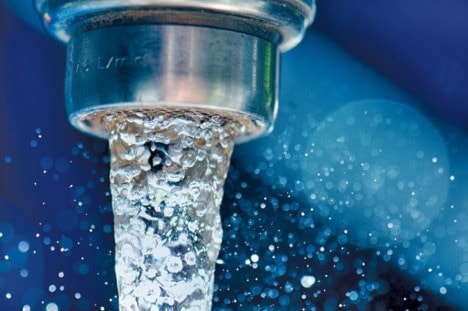Mission is considering a $12-million water metering program to address water consumption costs and leakage, but some are questioning whether it’s a fair burden to put on taxpayers.
A staff report to council is expected to be presented to politicians Aug. 8, containing pros and cons of going ahead with the capital project, and deputy chief administrative officer Paul Gipps said council will likely ask for a request for proposal on implementation costs.
It’s estimated 17 per cent of Mission’s water is lost to leakage through cracks in watermains, reservoir cracks and overflows. Mission has various leak detection methods, but the decision to make repairs generally comes down to the value of the water saved versus the maintenance cost.
Mission’s retired director of inspection services, Larry Nundal, said the municipality should conduct a trial program before spending so much money.
“Is there enough water leakage to spend $12 million? I doubt it,” said the council critic.
Nundal says the individual savings from metering would have to outweigh the costs of dividing $12 million by the tax base in the district.
Mission has a residential tax base of 12,635 according to BC Assessment 2011 numbers, which means the per capita cost of the project would be roughly $950 for each home.
But the district’s director of finance, Ken Bjorgaard, believes it wouldn’t be accurate to simply divide the cost by the tax base.
He said $3.4 million has been saved in the district’s gas tax reserve fund since 2006 with the long-term goal of using it for water metering, and expects to have $7 million when the time comes. Other options include borrowing, applying for federal or provincial grants, and finding money in other capital reserve funds or new revenues.
Rick Bomhof, Mission’s director of engineering and public works, says it’s not all about money.
“Metering is very costly and it’s going to be difficult to justify it solely on the basis of cost and savings,” but added it’s a fundamental tool for managing.
“If you’re driving and you don’t have a speedometer, you have no idea how fast you’re going.”
The district’s water supply is administered by the Abbotsford-Mission Water and Sewer Services Commission (AMWSSC), but unlike metered Abbotsford, Mission has no means of measuring consumption, which translates into district residents consuming and paying more than their neighbours.
Based on 2006 census population figures, the AMWSSC ballparked 20 per cent of water services went to Mission in 2010, serving an estimated 81 per cent of the district’s population. Mission represents roughly 23 per cent of the population between the two municipalities.
Without water metering, the assumed per capita water demand of Mission is 440 litres per capita per day (l/c/d), much higher than Abbotsford’s 281 l/c/d.
Abbotsford has a uniform off-peak (November to April) residential water rate of $1.13 per cubic metre (1,000 litres of water), while Mission has an annual flat fee of $447.48 for single-unit residential customers regardless of usage.
However, there are between 100 and 150 new homes built in Mission recently that had meters installed during construction, and the rates for those homes are $0.97 per cubic metre on the first 300 cubic metres, with declining rates for each subsequent 300-cubic metre consumption bracket.
Based on current rates, an average Abbotsford home pays about $0.32 each day for water, while the average Mission home pays $1.23. Metered homes, however, would pay $0.43 each day under the current structure.
Gipps cautions against expectations of drastically reduced water rates though, citing the need to adjust prices upwards to pay for basic water infrastructure maintenance costs.
Bomhof said the current declining rate structure will have to be changed to AMWSSC-recommended inclining rates once meters are in place.
“It’s always been that way in the past for industrial-commercial and it’s definitely the wrong way to encourage water conservation.”
Council has in the past cited the need to address water demand, which is projected to increase 64 per cent by 2031 based on population growth estimates.
Currently, the AMWSSC has a bulk metering system to measure flows at five locations in the water transmission system. Their 2010 Water Master Plan report says metering in Mission would allow for better leak detection in the system, bringing more consumption equality to the municipalities.
Gipps says it’s nearly impossible to manage what you can’t measure.
“If you go to a gas pump and I get to pay the same as somebody filling up a Hummer and I’m filling up a motorcycle or a little SmartCar, I don’t think that’s fair,” he said.
The capital costs for water meter installations have resulted in some municipalities holding off, or cancelling it altogether.
Armstrong (population 9,000) has recently postponed metering after a $400,000 provincial grant fell through. They’ll wait until 2012 to see whether they can use a portion of the gas tax revenue.
Kamloops has just finished installing 20,000 water meters in order to shift to a consumption-based payment system. That project will cost $11.5 million.
Vancouver has also considered mandatory water metering, although its per capita daily consumption is 120 litres lower than Mission. It could see installation begin as early as January.
The municipality of North Cowichan, which is already metered, believes frequent meter reading is the best way to detect water loss, recently estimating 70 million litres of water have been wasted through residential leaks, the equivalent of one month of average water use in Chemainus.
Fort St. John introduced water metering in 2006 and has reported a usage decrease of over 800 million cubic metres between 2006 and 2010.
In 1991, only half of Canadian households had water meters; today, various estimates peg this number at close to 75 per cent, because most municipalities find they can reduce costs by measuring consumption.
